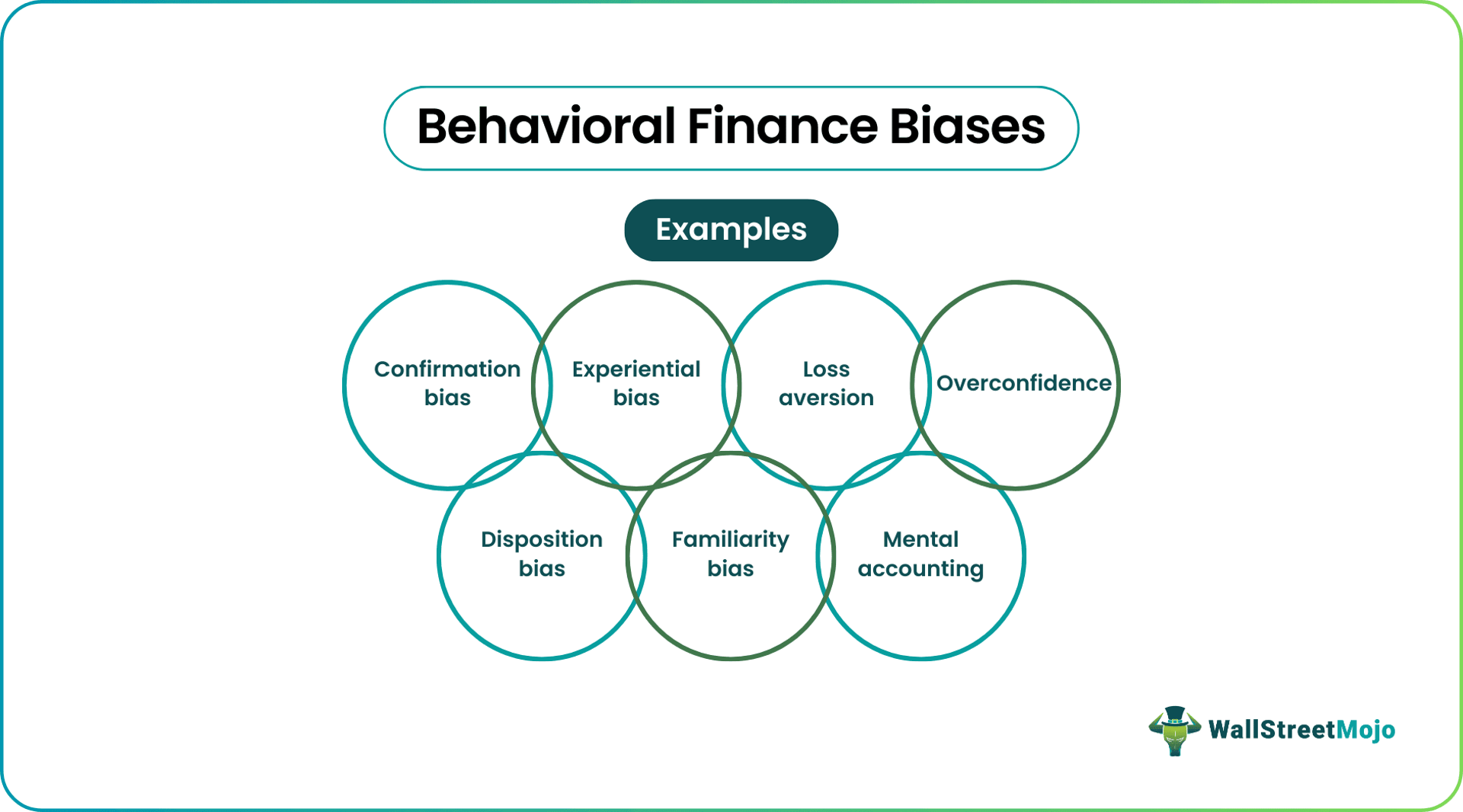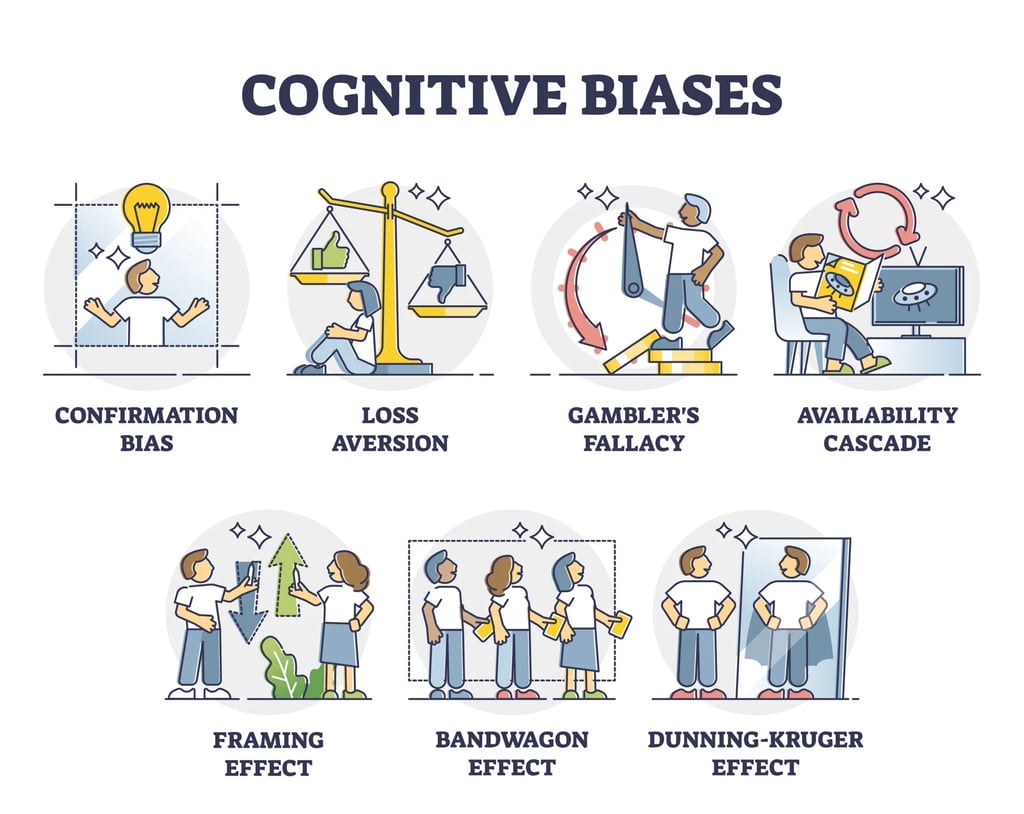
Mastering Your Mind: Behavioural Biases in Investment Decisions – And How to Overcome Them
Even the smartest investors fall prey to psychological traps. This blog dives deep into the most common behavioural biases that influence our financial decisions—and offers actionable strategies to help you invest with clarity, discipline, and confidence.
FINANCIAL PLANNING
4/28/20254 min read


Introduction
When people think about successful investing, they often picture sharp suits, fast calculations, and brilliant strategies. But in reality, one of the biggest determinants of investment success isn’t market knowledge—it’s emotional discipline.
Our minds often trick us into making decisions that feel right but are financially harmful. These mental shortcuts, or behavioural biases, cloud our judgment and lead to mistakes like panic selling, chasing trends, or refusing to cut losses.
The good news? Once you understand these biases, you can recognize and manage them. This blog explores some of the most common (and dangerous) behavioural biases investors face and offers strategies to overcome them.
Key Behavioural Biases in Investing
1. Overconfidence Bias
What it is:
Overconfidence leads investors to overestimate their own knowledge, skills, or ability to predict market movements. It can cause excessive trading, insufficient diversification, and ignoring warning signs.
Example:
An investor is so sure about their stock-picking ability that they put a large portion of their portfolio into a single stock, ignoring broader risks.
How to Overcome:
Track your predictions vs. actual outcomes.
Stay humble—markets are complex and unpredictable.
Seek external opinions before making big moves.
2. Loss Aversion
What it is:
Losses feel more painful than equivalent gains feel pleasurable. Investors often hold onto losing positions longer than they should to avoid the emotional pain of realizing a loss.
Example:
Keeping a poorly performing stock in your portfolio, hoping it will recover, rather than reallocating the funds into a better opportunity.
How to Overcome:
View selling a loss as making a smarter decision for your future.
Focus on portfolio health, not individual investments.
Stick to pre-determined stop-loss or rebalancing rules.
3. Herd Mentality
What it is:
People naturally want to follow the crowd. In investing, this often results in buying into fads or bubbles without doing personal research.
Example:
Buying Bitcoin just because "everyone" is talking about it without understanding the underlying technology or risks.
How to Overcome:
Build a personal investment philosophy and stick to it.
Be skeptical of “hot tips” and viral trends.
Remember: If everyone is already doing it, it may be too late.
4. Anchoring Bias
What it is:
Anchoring occurs when investors rely too heavily on the first piece of information they encounter—such as the original purchase price of an asset.
Example:
Refusing to sell a stock that has fallen significantly because you're mentally anchored to its original (higher) purchase price.
How to Overcome:
Re-evaluate investments based on present and future prospects, not past costs.
Ask yourself: “If I didn’t already own this, would I buy it today?”
5. Confirmation Bias
What it is:
Confirmation bias leads people to seek out information that supports their existing views, while dismissing evidence that challenges them.
Example:
Only reading positive news articles about a company you already invested in, while ignoring warning signs.
How to Overcome:
Actively look for opposing arguments and data points.
Play devil’s advocate to your own ideas.
Keep emotion out of research—follow the facts.
6. Gambler’s Fallacy
What it is:
The mistaken belief that past random events influence future outcomes. In investing, it leads people to expect a reversal ("it’s bound to go up/down") after a streak.
Example:
Believing that because a stock has fallen five days in a row, it’s "due" for a rise—even if fundamentals haven’t changed.
How to Overcome:
Treat each investment decision independently.
Focus on fundamentals, not patterns that are statistically meaningless.
Accept that markets can trend longer than expected.
7. Availability Cascade / Availability Bias
What it is:
Availability bias occurs when people overestimate the likelihood of events based on how easily examples come to mind—often driven by media coverage.
Example:
After hearing news stories about a recession, an investor might panic and sell everything—even if their personal situation hasn't changed.
How to Overcome:
Analyze hard data, not just news headlines.
Recognize that the most talked-about risks are not always the most probable or impactful.
Maintain a long-term view amid short-term noise.
8. Framing Effect
What it is:
The way information is presented can significantly impact decision-making—even when the underlying facts are the same.
Example:
Preferring an investment opportunity described as “80% success rate” over one described as “20% failure rate”—even though both mean the same thing.
How to Overcome:
Focus on the underlying facts, not the presentation.
Reframe information neutrally when evaluating decisions.
Be cautious of marketing language that appeals to emotions.
Practical Strategies to Stay Rational
1. Set Clear, Long-Term Goals
Having a clear financial roadmap prevents you from making impulsive, emotion-driven decisions.
2. Stick to a Systematic Investment Process
Define rules for asset allocation, portfolio rebalancing, and risk tolerance—and follow them consistently.
3. Maintain Diversification
A well-diversified portfolio cushions against mistakes in individual investments and reduces emotional volatility.
4. Conduct Periodic Portfolio Reviews
Review your investments objectively at set intervals, not based on emotions triggered by market movements.
5. Keep an Investment Journal
Document your reasoning for every major decision. Reviewing it later can help spot patterns of bias.
6. Educate Yourself Regularly
Continuous learning about behavioral finance and market dynamics sharpens decision-making over time.
7. Work with a Financial Advisor
An experienced advisor can help keep emotions in check and provide a rational, third-party perspective.
Conclusion
Behavioral biases are invisible obstacles on the road to financial success. They affect all investors—newcomers and professionals alike. Recognizing and actively managing these biases can significantly improve your investment decisions, discipline, and outcomes.
Remember: Mastering your investments begins with mastering your mind.
By building awareness, following a clear process, and staying grounded in facts rather than emotions, you can create lasting financial success.
Trust
A Partnership built on Trust, Transparency, and Long-term success
Turning your aspirations into reality.
Contact
prosperaa.wealth@gmail.com
+91-8208935082
© 2025. All rights reserved.
Office No.C-3, B-Wing, 1st Floor, Bharat Bazaar, Chikalthana MIDC,
Chattrapati Sambhajinagar, MH
431006
Pune, MH
Mumbai, MH
